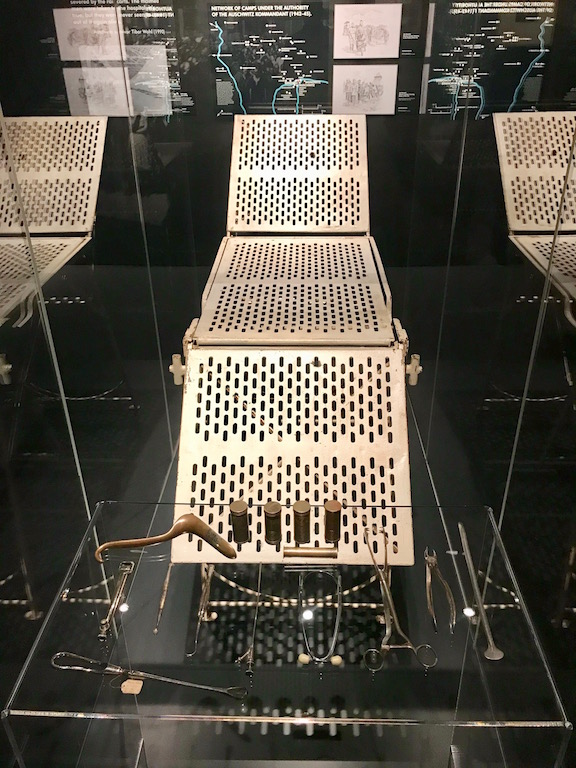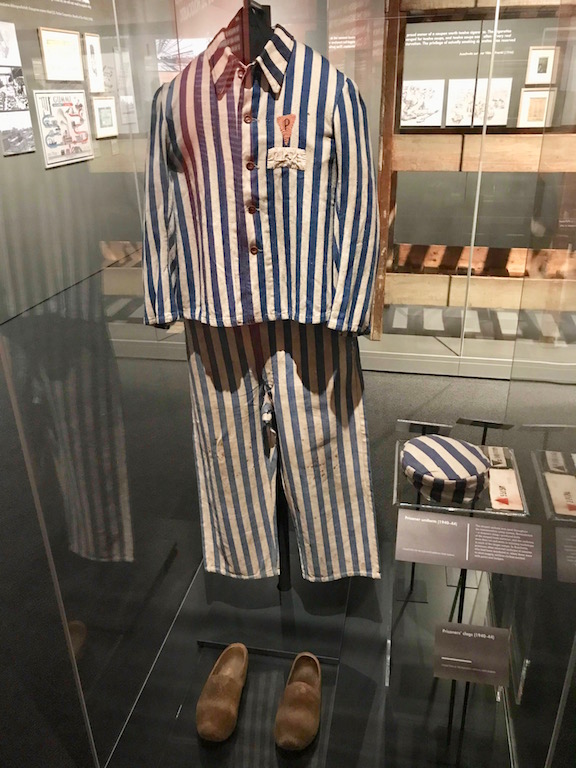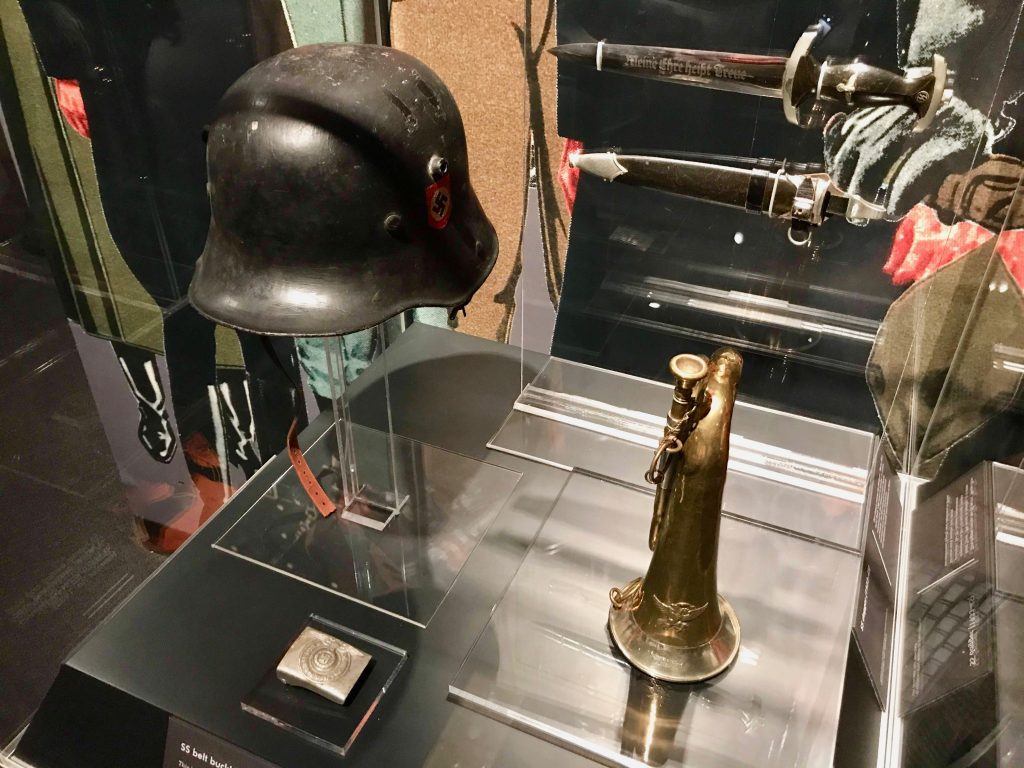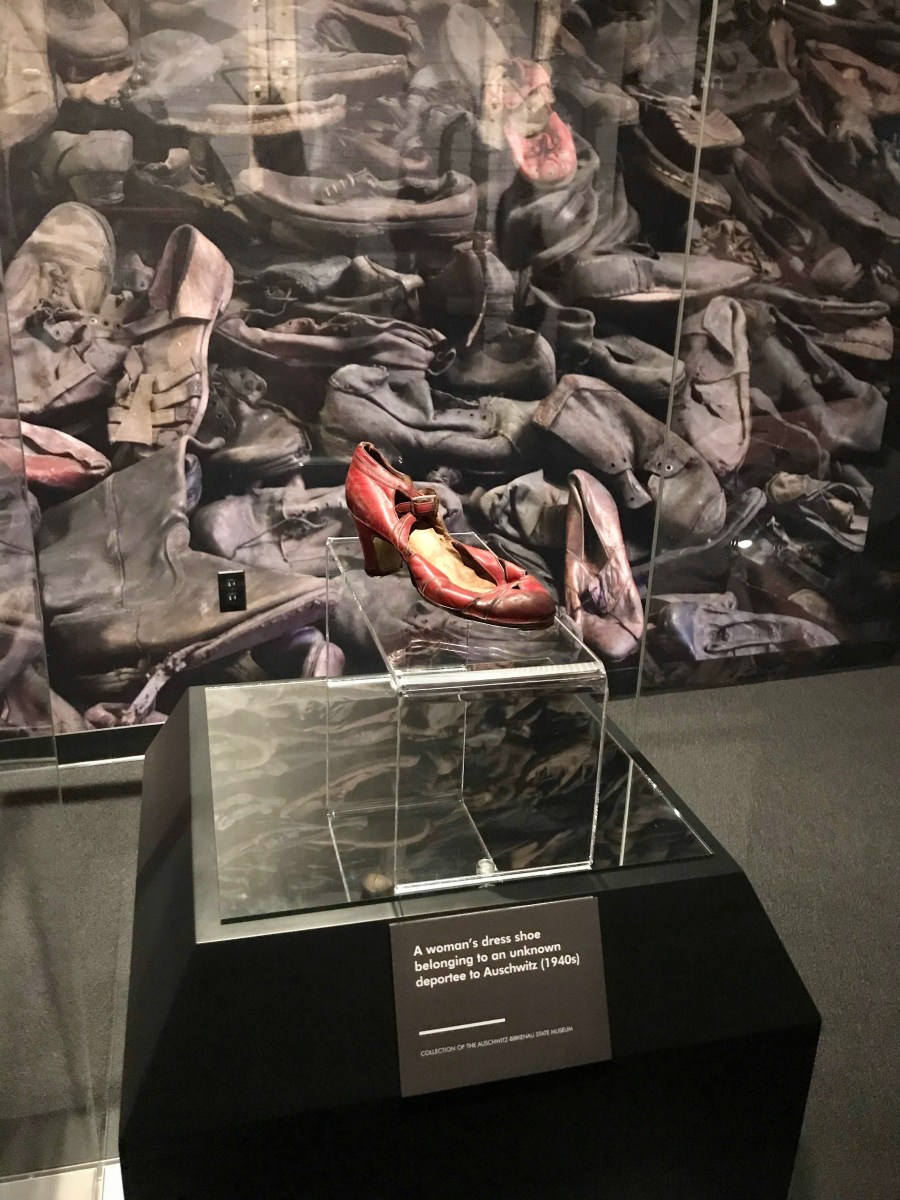BY GABE HERMAN | A comprehensive exhibit about the Auschwitz concentration camp has opened at the Museum of Jewish Heritage in Battery Park.
“Auschwitz. Not long ago. Not far away” is produced in partnership with Musealia, an international exhibition firm, and the Auschwitz-Birkenau State Museum in Poland.
Featuring more than 700 original objects and 400 photographs, the exhibit spans three floors of the museum. It opened on May 8, the anniversary of VE Day, 1945, when the Allies celebrated Nazi Germany’s surrender in World War II.
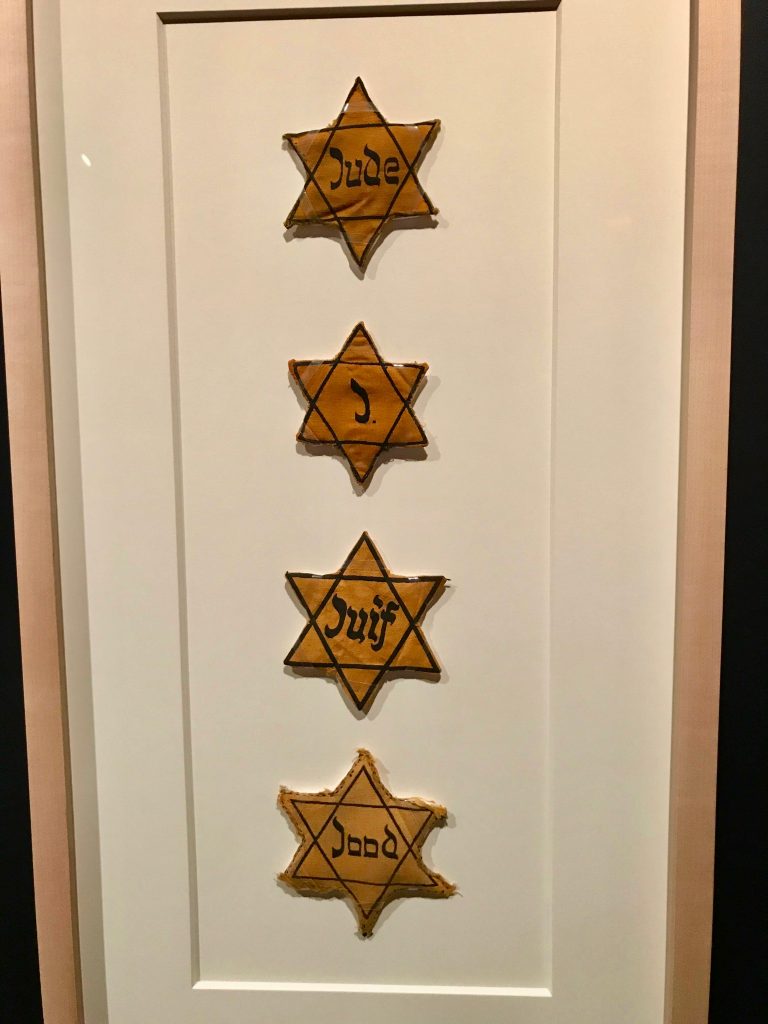
The artifacts on display are chilling, and include personal items of prisoners and Nazi objects, as well.
There are possessions of concentration-camp prisoners, like shoes, buttons and suitcases. There are identification tags and prisoner uniforms. There is a Hitler Youth bugle, an SS belt buckle and dagger, and Heinrich Himmler’s personal SS helmet that he wore. And there are materials that were used for medical experiments on prisoners, such as an operation table, test tubes and other medical instruments.
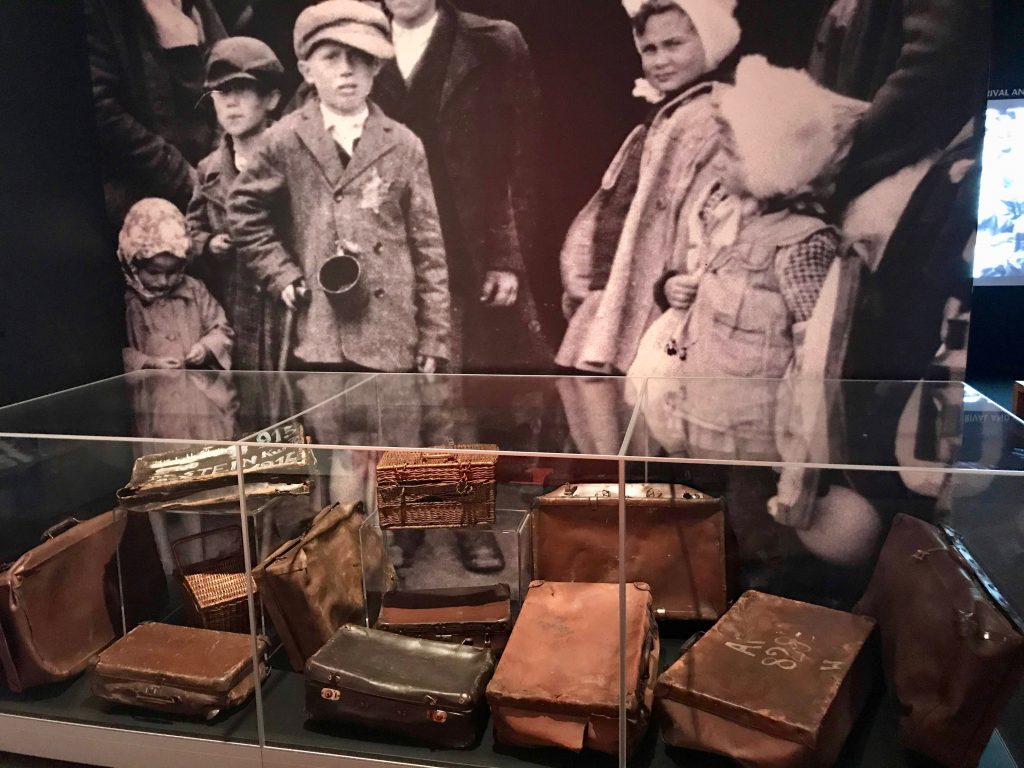
Outside the museum, located at 36 Battery Place, a German World War II-era freight car has also been installed.
Also in the exhibit are concrete posts, isolators and barbed wire that were once part of Auschwitz’s perimeter.
The devastating objects in the exhibit are too numerous to name. But they each bring to life some of the profound horrors of the concentration camp, where 1 million Jews were murdered, along with tens of thousands of others from groups the Nazis viewed as “inferior” or “undesirable.”
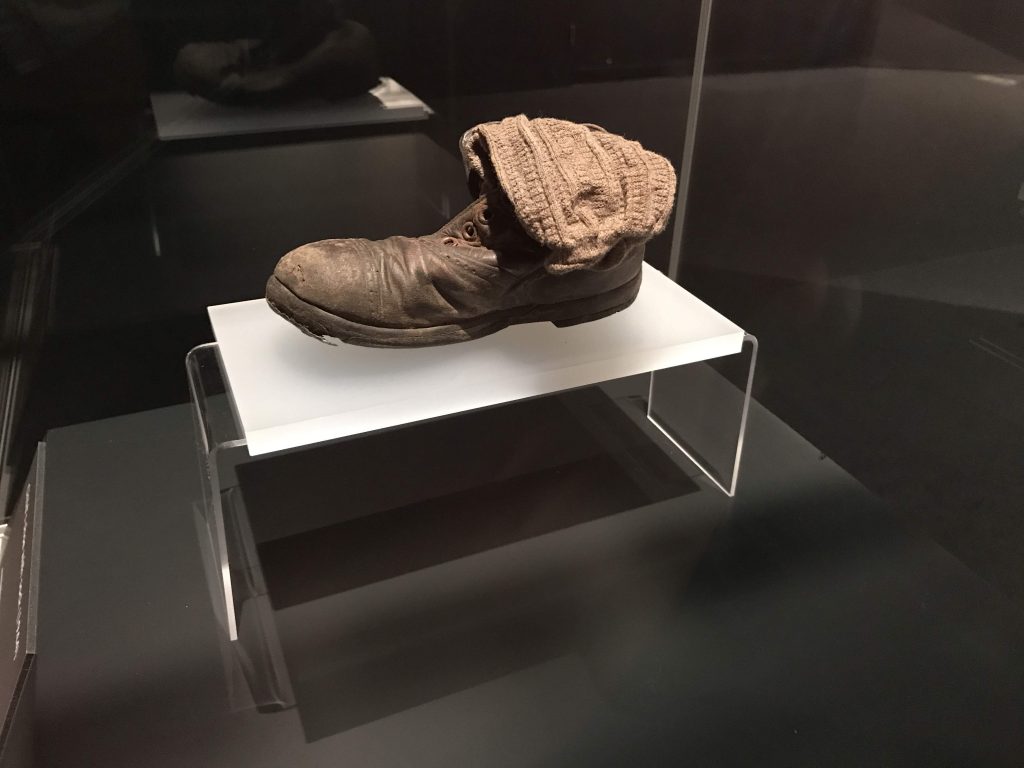
Along with the hundreds of objects and photos, there are video testimonials of survivors throughout the exhibit. There are models that show the layout of Auschwitz, which was actually a complex of three main camps and nearly 50 sub-camps.
The exhibit is very informative, not only about Auschwitz itself but the historical context of the Nazi rise to power and the history of modern anti-Semitism. Other persecuted groups are also acknowledged, including the Roma and Afro-Germans.
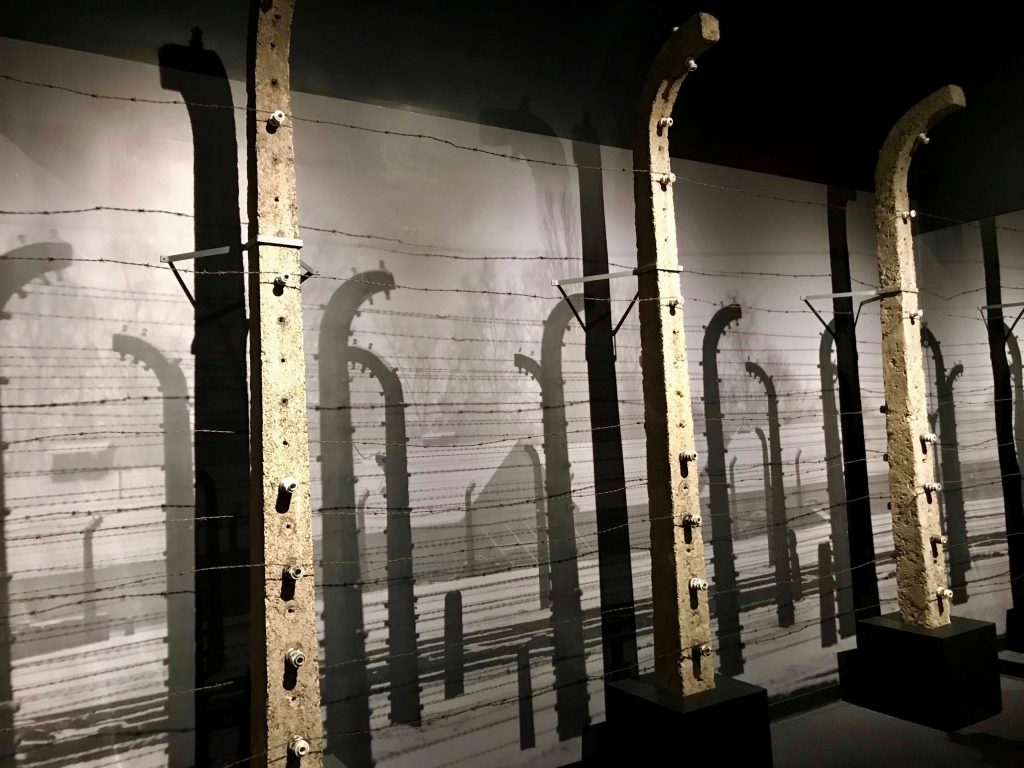
“We learn from this exhibition that we cannot be bystanders, it is our sacred duty to educate,” said Bruce Ratner, chairperson of the board of the Museum of Jewish Heritage, at a press conference a week before the exhibit’s opening. “We need to redouble our efforts to educate, especially young people.”
A common theme at the press conference was that the hatred on display in the exhibit is not a thing of the past.
“We are fighting anti-Semitism every day,” said Ronald Lauder, founder and chairperson of the Auschwitz-Birkenau Foundation Committee and president of the World Jewish Congress. “We find out in country after country that young people don’t know about the Holocaust.”
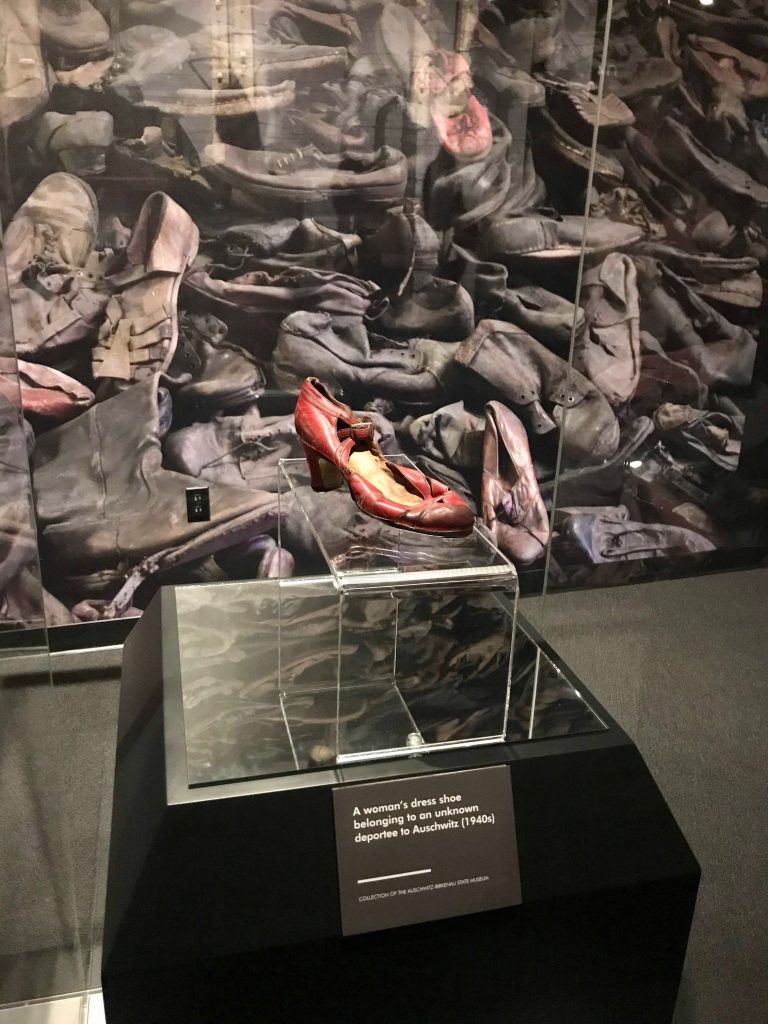
Lauder noted that there are a lot of populist ideologies with anti-Semitic elements spreading in present-day Europe.
“It’s something we have to fight,” he said. “The only way to beat anti-Semitism is through education — teaching children about the horrors of Auschwitz.”
Anti-Semitism is an increasing problem in New York City, as well. The New York Police Department announced in early May that hate crimes were up 67 percent in the first quarter of 2019, including an 82 percent increase in anti-Semitic hate crimes.
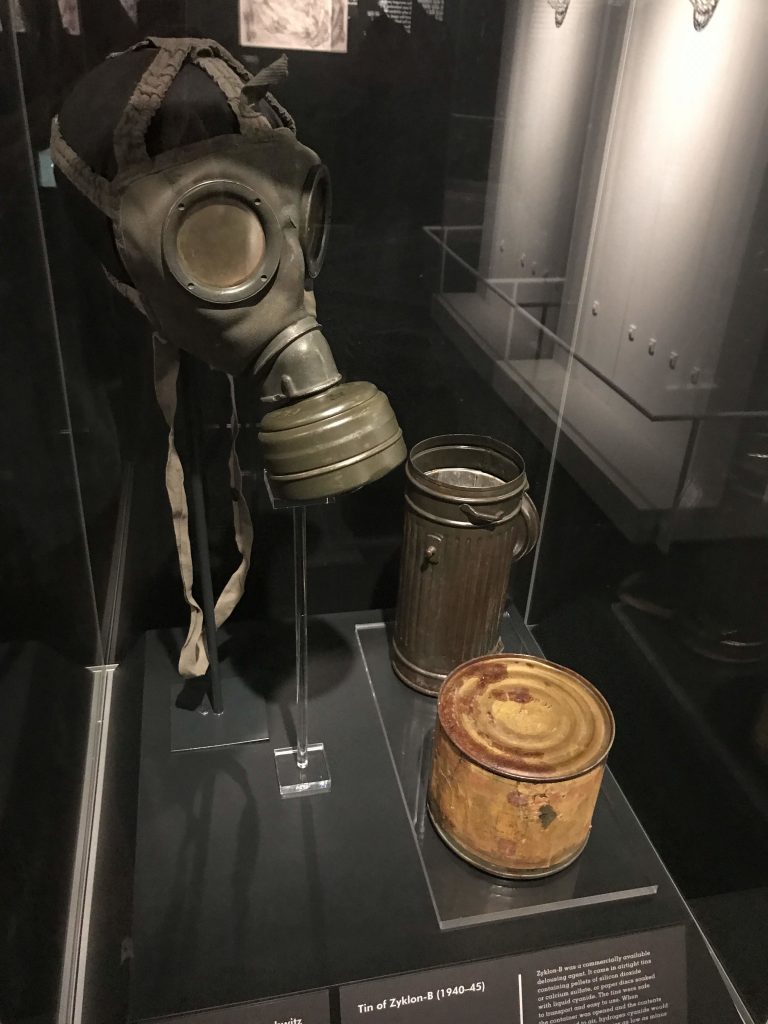
More than 2 million people visit Auschwitz every year, noted Pawel Sawicki, spokesperson for the Auschwitz-Birkenau State Museum. But he said this exhibit in Lower Manhattan can give those who can’t visit the actual site an experience, and prompt them to ask, “What can I do today?”
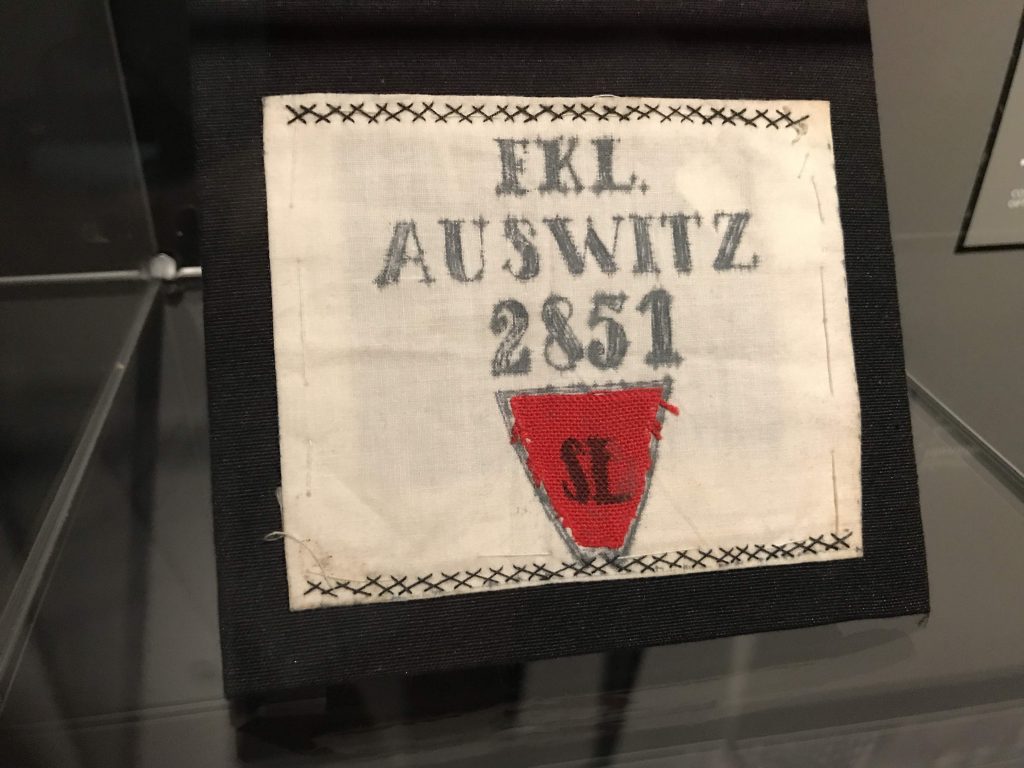
Timed tickets to the exhibit, along with more information, are available at Auschwitz.nyc. The exhibit — which runs through Jan. 3, 2020 — is free for Holocaust survivors, active members of the military and first responders, and New York City public school students and educators.
